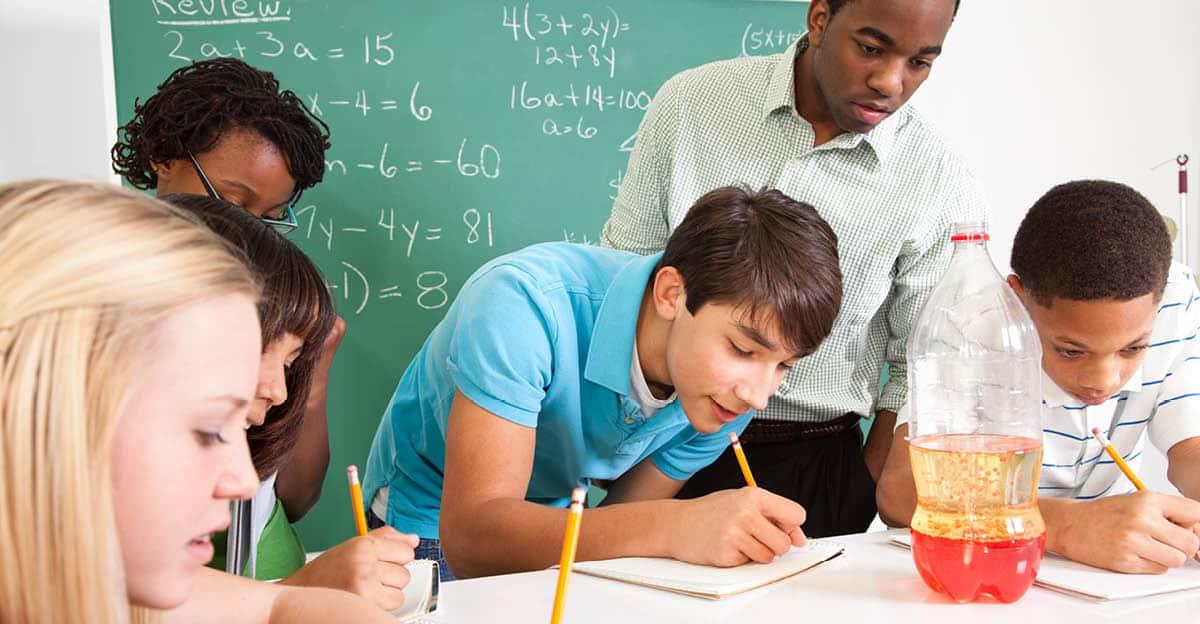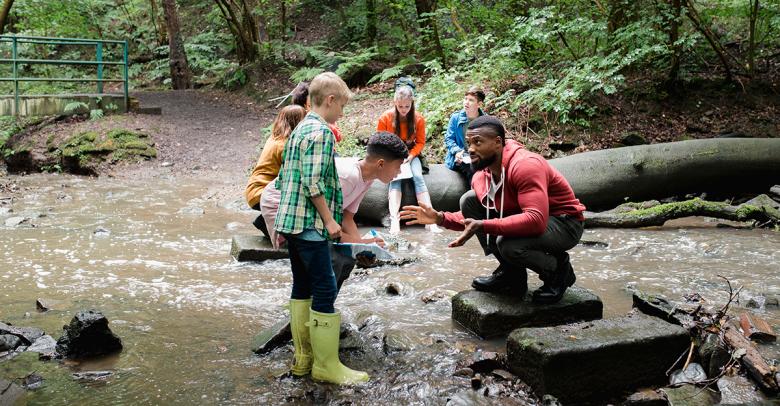The Crosscutting Concepts Framework, created and studied by Next Generation Science Standards, suggests that a successful science education in grades K-12 be built around concepts that unify the study of science and engineering through their common application across fields. The core principles that make up Crosscutting Concepts help students to form a deep understanding of scientific and engineering views and processes.
The Seven Key Crosscutting Concepts
The seven Crosscutting Concepts are core themes that are common to all scientific disciplines. These basic concepts are themes that can be used to help students make connections across science and engineering from a young age.
Patterns
In order to organize and classify forms and events, patterns are observed that encourage questions about relationships and what factors are an influence.
Cause and Effect
Every event has a cause, and a major part of scientific investigations is observing and then explaining relationships between events and the mechanisms that caused them. An explained mechanism can then be used in other contexts to predict or explain other events.
FOSS Next Generation Air and Weather module addresses this for grade 1:
Students use syringes to investigate air–they discover that air can be compressed and that air under pressure can push objects around. They do this by experimenting with two syringes and a flexible rubber tube to see how the pieces interact. First, students attach the rubber tube to the end of one syringe and observe what working the plunger does. Then, they attach each end of the rubber tube to a syringe to see how they interact. The teacher introduces pressure and compress and the class discusses topics such as air wrestling. At the end students discuss their notebook entries in groups.
Scale, Proportion, Quantity
Recognizing relevant measures of size, time, and energy and changes in scale, proportion, and quantity are key to understanding a system’s structure and gauging performance.
ScienceFLEX Our Active Earth module addresses this for grades 3-5:
Using the LEARN Augmented Reality app, students explore Earth’s internal structure and identify characteristics of the layers. To do the activity, the class is divided into groups of four to view the virtual 3D model of the layers of the Earth. They then answer questions like, “Which layer of Earth can you see?” and “Which layer is as hot as the surface of the sun?” and are asked to label the Crust, Mantle, and Core. Through the LEARN app, students are able to toggle the layers of the earth to see the relevant measures in size as the layers get bigger.
Systems and System Models
Defining the system under study—specifying its boundaries and making an explicit model of that system—provides tools for understanding and testing ideas that are applicable throughout science and engineering.
Energy and Matter
Recording changes in energy and matter within and out of a system helps students understand its varying possibilities and limitations.
CPO Science Foundations of Physical Science addresses this for grades 9-12:
Students learn about the different type of energy, and how to calculate them. Then, they experiment in the lab using a marble and loop track to test how a marble’s energy changes as it moves along the track. Using their recent knowledge, the explore how the potential and kinetic energy change as the marble rolls along the track. The investigation ends with students predicting the minimum release height and maximum velocity at the top of the loop.
Structure and Function
To determine an object’s or living thing’s properties and functions, students must examine its shape and structure.
Stability and Change
Conditions of stability and rates of change or evolution are critical in studying and understanding any system, living thing, or event.
Crosscutting Concepts Form a Framework
Crosscutting Concepts are important because they give students the tools they need to investigate and problem solve from a scientific point of view. Making predictions and then comparing those in relation to the Crosscutting Concepts in the list above helps students to observe and interact with the real world.
In previous years, students were expected to develop and use Crosscutting Concepts without specific instruction and support to solidify that process. However, it was students who were formally introduced to crosscutting concepts that were more prepared to understand how the concepts were aligned across disciplines.
FOSS Next Generation
The latest FOSS® program, FOSS® Next Generation™ aligns three key dimensions of science education: Science & Engineering Practices, Disciplinary Core Ideas, and the Crosscutting Concepts. The FOSS® Next Generation™ program is designed to equip students by allowing them to continually build and develop more complex and comprehensive science and engineering ideas.
Using investigation experiences, students in the FOSS® program are building skills in formative assessment, science-centered language development, literacy, and the use of technology to collect and organize data.
Learn More: FOSS® Next Generation™
ScienceFLEX Modules Reinforce Crosscutting Concepts
ScienceFLEX from Delta Education is a supplemental science program available for educators interested in blending hands-on classroom activities with informational text readings. Using science and engineering practices, this flexible science program reinforces crosscutting concepts and includes the LEARN™ augmented reality software for more in-depth classroom investigation and learning. Check out a sample investigation.
CPO Science
CPO Science core curriculum programs engage students through active investigation. The instructional design begins with an introductory hands-on investigation, followed by reading, applied investigations, and opportunities for re-teaching, challenging, and extending learning.
Our programs incorporate elements of STEM to help students make connections between the natural and designed worlds. Students come to understand the scientific need for technologies, apply their growing knowledge through processes of a scientific or engineering nature, and use mathematics as a means to communicate their acquired scientific information.






Leave a Reply